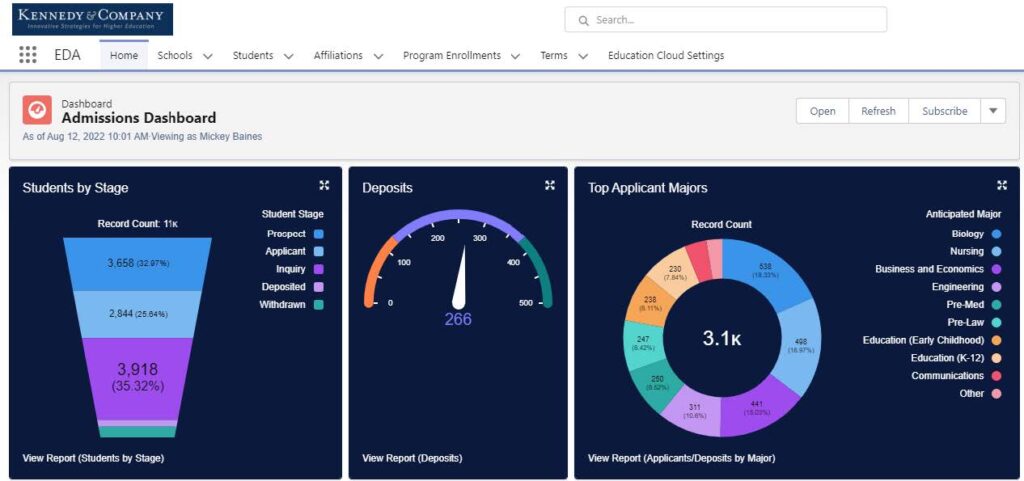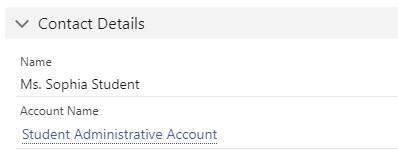As Salesforce continues to develop Education Cloud products for Higher Education, you may be asking yourself, “Should I be using EDA (Education Data Architecture) with my TargetX/managed package Salesforce instance?
The answer is a resounding, “Maybe!”
There are several reasons why you may want to install and configure EDA for use along with your current set of managed package(s) and custom configurations.
But wait–the first thing to consider are limitations that mean you should not install EDA. The main features that prevent EDA installation are Person Accounts and the Nonprofit Success Pack. If you are using either of these extensively, then you should hold off on using EDA.
All good there? Then, let’s explore some reasons why you would consider EDA.

Use Case 1: Installing EDA for the Administrative Account Feature
One of the biggest advantages of EDA is the built in account management feature. As you are likely aware, the cornerstones of the Salesforce CRM functionality are contacts and the accounts that they are related to. Every contact is required to have an account.
Without EDA, many Salesforce instances associate contacts with Educational Institution-type accounts, modeling a contact’s current enrollment. This often leads to thousands of contacts stored under the same account–particularly in the case of large feeder schools, the current institution, or the catch-all “Unknown School” account.
Salesforce warns against having more than 10,000 contacts associated with any one account. This leads to “Data Skew, ” which results in performance degradation.
In contrast, EDA includes “Administrative Accounts” where each contact is related to one primary administrative account, described using the naming convention of your choice.

Example student with Last Name Administrative Account

EDA Settings for Administrative Account naming convention
In addition to automatically creating and maintaining this account relationship, easily accessible settings allow you to update all of these accounts at one time and automatically delete certain types of accounts if they don’t have any related contacts.
If you do not have a solid strategy for maintaining accounts and avoiding data skew in your instance of Salesforce, this EDA feature alone may justify installing the package.
Here are the high-level steps to introduce administrative accounts in your instance:
- Install the EDA application in a Sandbox (testing environment).
-
Take necessary steps to configure the features that you would like to turn on (see below for another popular feature).
-
Update all contacts to have an administrative account, one method being to delete the current account association, allowing EDA to automatically populate the administrative account.
-
Ensure integrations and applications no longer populate other accounts:
-
Test your form and/or application tool with settings to allow EDA to populate the administrative account .
-
Test your bulk data loads without populating a specific account, allowing EDA to populate the administrative account.
-
- Take the above steps in Production to go-live.
Use Case 2: Installing EDA for Relationship Management
Many institutions are interested in storing parents and others related to students–such as counselors, guardians and teachers–as contacts.
EDA includes functionality for relating one contact to any number of other contacts and naming that relationship. EDA also gives you flexibility for how these relationships are named and maintained, and it even maintains the bi-directionality of the relationship.

Example relationship records for Sophia Student

Example relationship records for Andy Young (Sophia Student’s father)
Once all of your student contacts’ relationships are also contacts, you can utilize functionality designed specifically for contacts–such as Pardot, LinkedIn, and emailing from list views–for more than just students.
Use Case 3: Installing EDA Now to Ease Transition Away from Managed Packages
Finally, if your institution may be considering a move away from third-party managed packages and transitioning to standard Salesforce functionality coupled with your own customizations of the platform and/or more of the Education Cloud suite of products, installing EDA for use alongside your current managed package(s) is a great way to start this transition.The previous two use cases are solid examples of what to tackle first in this endeavor.
See our article, “How do I prepare for a transition from TargetX to Education Cloud?” for more information on this use case.
Need help assessing whether or not your Salesforce instance is a good fit for EDA? Check out these steps outlining the process.

